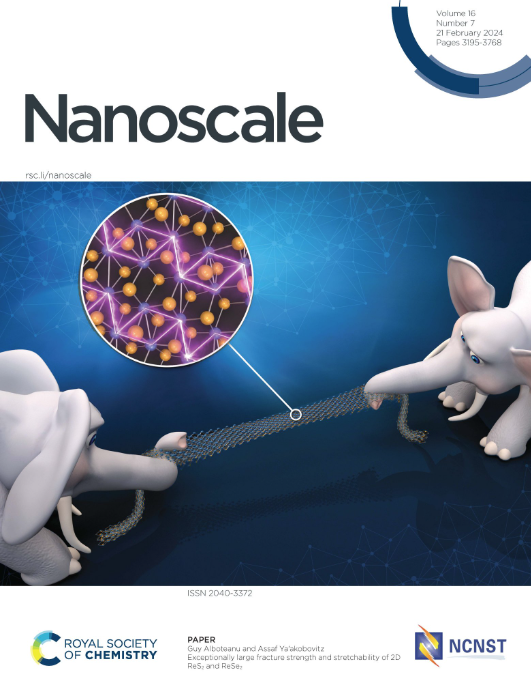Selective and local flash-annealing for improvement in the contact characteristics of MoS2 transistors
IF 5.8
3区 材料科学
Q1 CHEMISTRY, MULTIDISCIPLINARY
引用次数: 0
Abstract
The fields of nanoscience and nanotechnology have recently progressed toward the sub-10 nm scale, which is a technology node that requires new materials for various applications owing to the quantum mechanical limitations of silicon. Accordingly, two-dimensional transition-metal dichalcogenides (2D TMDCs) are widely being studied due to their great potential for low-power electronics. Despite these striking advantages, 2D TMDC field-effect transistors have poor mobility due to their high contact resistance and interfacial scattering of defects. To mitigate non-ideal electrical contacts, thermal annealing processes are performed in most cases; however, such processes require expensive and bulky equipment. In this study, a facile approach is proposed for ambient-air and selective annealing, which is performed on a wafer scale between MoS2 and electrodes through flash lamp irradiation. Flash lamp irradiation promotes excellent photothermal annealing, thus increasing the electrode temperature to >640 K, significantly enhancing the device performance. It was confirmed that the primary cause for the improvement of contact characteristics is the hybridization between Au and MoS2 and the generation of sulfur vacancies in MoS2, supported by surface element analysis and optical measurements.

改善二硫化钼晶体管接触特性的选择性和局部闪蒸退火
纳米科学和纳米技术领域最近已经向10纳米以下的尺度发展,这是一个技术节点,由于硅的量子力学限制,需要新的材料用于各种应用。因此,二维过渡金属二硫族化合物(2D TMDCs)由于其在低功耗电子领域的巨大潜力而受到广泛的研究。尽管具有这些显著的优点,但由于其高接触电阻和界面散射缺陷,2D TMDC场效应晶体管的迁移率较差。为了减轻非理想的电接触,在大多数情况下进行热退火处理;然而,这种过程需要昂贵而笨重的设备。在本研究中,提出了一种简单的环境空气和选择性退火方法,该方法通过闪光灯照射在MoS2和电极之间进行晶圆尺度的退火。闪光灯照射促进了优异的光热退火,从而将电极温度提高到640k,显著提高了器件性能。表面元素分析和光学测量结果证实,Au与MoS2的杂化和MoS2中硫空位的产生是导致接触特性改善的主要原因。
本文章由计算机程序翻译,如有差异,请以英文原文为准。
求助全文
约1分钟内获得全文
求助全文
来源期刊

Nanoscale
CHEMISTRY, MULTIDISCIPLINARY-NANOSCIENCE & NANOTECHNOLOGY
CiteScore
12.10
自引率
3.00%
发文量
1628
审稿时长
1.6 months
期刊介绍:
Nanoscale is a high-impact international journal, publishing high-quality research across nanoscience and nanotechnology. Nanoscale publishes a full mix of research articles on experimental and theoretical work, including reviews, communications, and full papers.Highly interdisciplinary, this journal appeals to scientists, researchers and professionals interested in nanoscience and nanotechnology, quantum materials and quantum technology, including the areas of physics, chemistry, biology, medicine, materials, energy/environment, information technology, detection science, healthcare and drug discovery, and electronics.
 求助内容:
求助内容: 应助结果提醒方式:
应助结果提醒方式:


